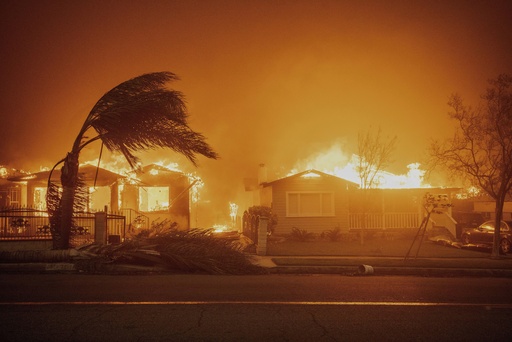
SACRAMENTO, Calif. — According to the California Insurance Department, the state’s program designed to secure insurance for homeowners lacking private coverage requires an additional $1 billion to accommodate claims resulting from recent wildfires in Los Angeles.
The FAIR Plan operates as a collective insurance pool funded by major private insurers. It issues policies to homeowners unable to secure coverage due to heightened risk factors associated with their properties. Initially created as a short-term solution, the FAIR Plan has seen a significant uptick in usage, with over 452,000 policies issued in 2024—more than double the numbers recorded in 2020.
The plan anticipates a staggering loss estimated at $4 billion due to the Eaton and Palisades Fires that ignited on January 7, leading to the destruction of nearly 17,000 structures and resulting in at least 29 fatalities. As of this week, around 4,700 claims have been filed, with the FAIR Plan already disbursing over $914 million in claims payments.
In a recent decision, the state has mandated that all insurance companies operating in California contribute to half of the FAIR Plan’s additional cost. These companies can recoup these expenses through a one-time fee imposed on their policyholders. This fee may be collected over the next two years, with approval from the Insurance Department required for any increases.
While specifics regarding the fee amount are not yet available, the approved request allows for notices to be sent out, and the collection of funds from insurers within 30 days. This move marks the first time in over three decades that the FAIR Plan has sought additional funding.
Insurance Commissioner Ricardo Lara stated that the goal of this decision is to ensure that the FAIR Plan fulfills its commitment to pay claims, similar to any standard insurance company. He emphasized his stance against those who wish to undermine the insurance market, highlighting that wildfire survivors deserve prompt compensation instead of uncertainty.
The FAIR Plan expects to receive approximately $1.45 billion in reinsurance, contributing to its claim payments, and anticipates a remaining balance of around $400 million by July. Reports indicate that 45% of the current wildfire claims are classified as total losses, 45% as partial losses, and 10% pertain to fair rental value.
Insurance representatives assert their intention to support recovery efforts, noting that the ability to recoup costs from policyholders is crucial to maintaining stability within California’s insurance market and preventing widespread cancellations that could affect countless residents.
However, Consumer Watchdog, an advocacy group, is contesting the rule enabling insurers to transfer costs onto policyholders. The organization’s executive director, Carmen Balber, stated that they are considering all legal options to avert any potential financial burden imposed on consumers.
California has been actively working to stabilize its insurance landscape after several major insurers ceased or curtailed new business operations in the state in 2023, which pushed a significant number of homeowners toward the FAIR Plan. Insurers argue that the increasing frequency and severity of wildfires, influenced by climate change, make it increasingly complex to accurately assess risk for properties.
According to data from the California Department of Forestry and Fire Protection, 15 of the 20 most destructive wildfires in the state’s history have taken place since 2015. In response, the state has permitted insurers more flexibility in premium adjustments in exchange for granting more policies in high-risk zones, allowing them to consider climate change in their pricing strategies, and pass some reinsurance expenses onto consumers.

